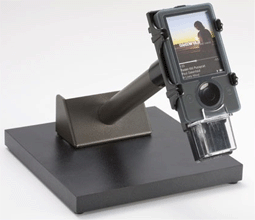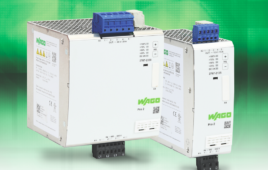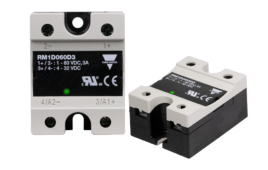By John Gyorki
Edited By John Gyorki
Most shoppers like to examine new products on store shelves and try to make them work without the help of a salesperson. Thankfully, new point-of-purchase (POP) displays are increasingly being used to answer this need and are now quite common in most department and mass-merchandizing stores. POP displays are relatively easy to produce for certain products such as computer gaming kiosks, but the design task is usually more difficult for extremely small, hand-held products.
This was the challenge that DCI Marketing, Milwaukee, Wis., a supplier of POP displays, recently faced when it was developing a new Microsoft Zune digital media player display for retail stores. The salespeople were eager to show their customers how the new Zune digital media player worked. They wanted customers to touch and feel the Zune so they could experience, first hand, how easy it is to use and how great it sounds. They hoped that this touching and feeling would get customers interested enough to purchase one. But they needed a way for customers to try a Zune, and not be able to permanently borrow it when the sales person was not looking.


Because the Zune MP3 player is a small, hand-held device, the single-cavity mold for die casting the POP display was relatively easy to make in only two major half shells.

The zinc die-casting process, rather than plastic injection molding, was selected to produce this final point-of-display assembly for the Zune MP3 player. The metal holder frame is strong, yet attractive, and lets customers handle the Zune MP3 player almost as though it was untethered.
Currently, DCI Marketing sells point of purchase displays that range from small, handheld electronic equipment to full-size floor displays in automobile showrooms. So, how could it design a small, attractive, and secure store display that lets customers try out the new Microsoft Zune digital media player without a sales person constantly watching over them? One way to solve the problem is to design a display that lets customers try an actual Zune while it is securely locked behind a transparent window. A remote controller could tilt the device 90 degrees so customers could see the Zune display in both portrait and landscape modes.
At the outset of the program, DCI evaluated various materials and manufacturing processes including metal and plastic. Many electronic POP displays are plastic injection moldings because the plastic can be made transparent. But, if the displays were made of plastic, the Zunes would have to be completely enclosed, and the customer would not be able to touch it. By comparison, a metal container would be stronger and better than plastic to deter thieves, but it would hide too much of the Zune body and likely appear too bulky and boxy. Fortunately, while still evaluating optional materials, a DCI employee familiar with zinc die-casting proposed zinc as an alternative substrate.
Filed Under: Digital manufacturing, Machine tools + subtractive manufacturing, Die casting, Materials • advanced, ELECTRONICS • ELECTRICAL





Tell Us What You Think!